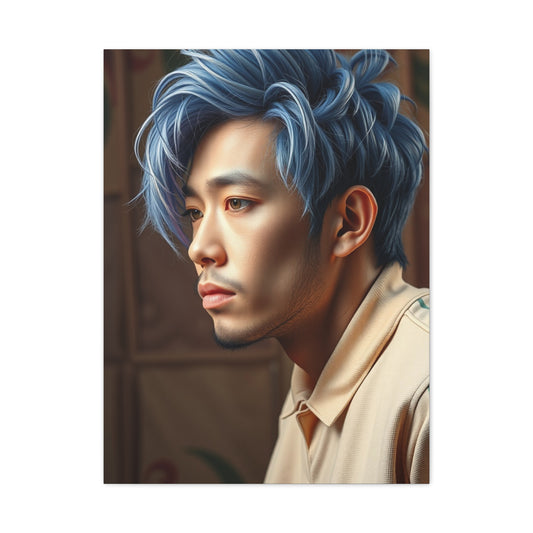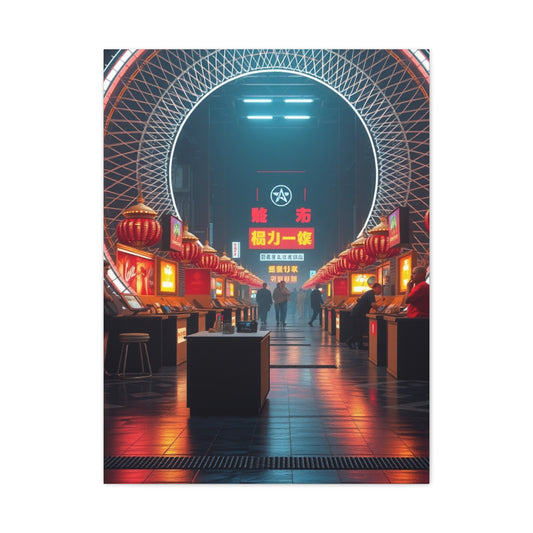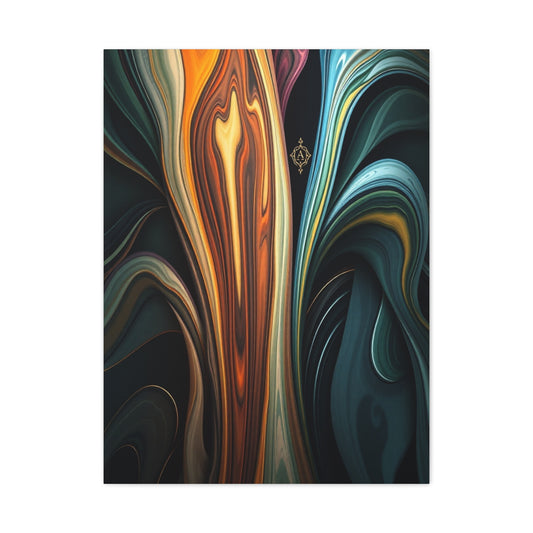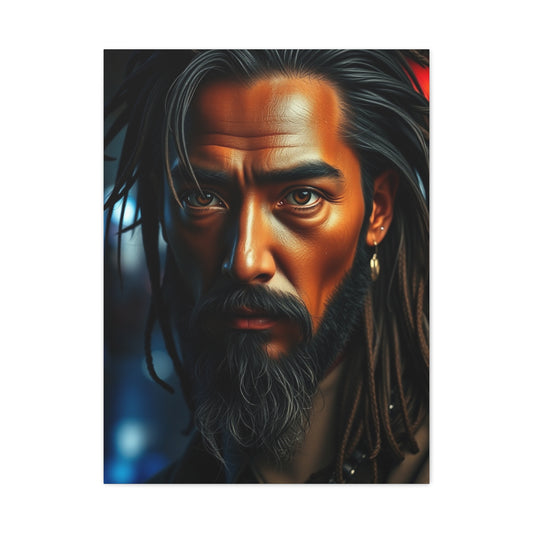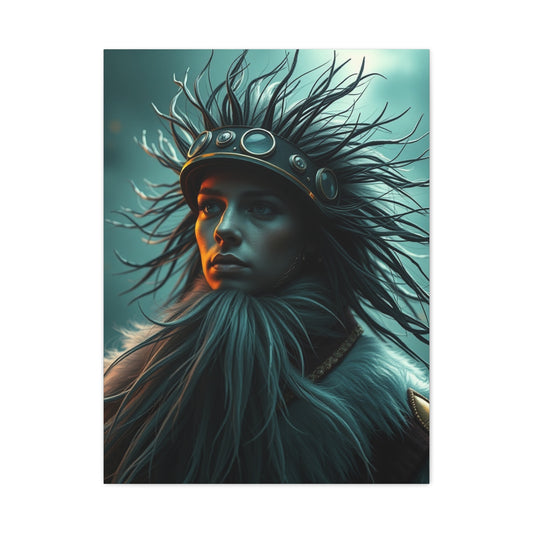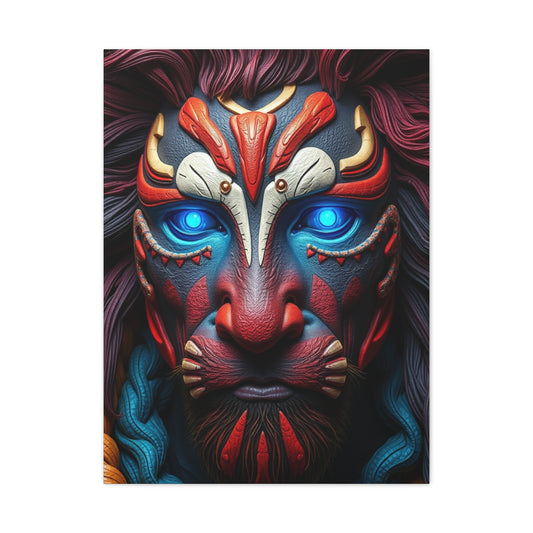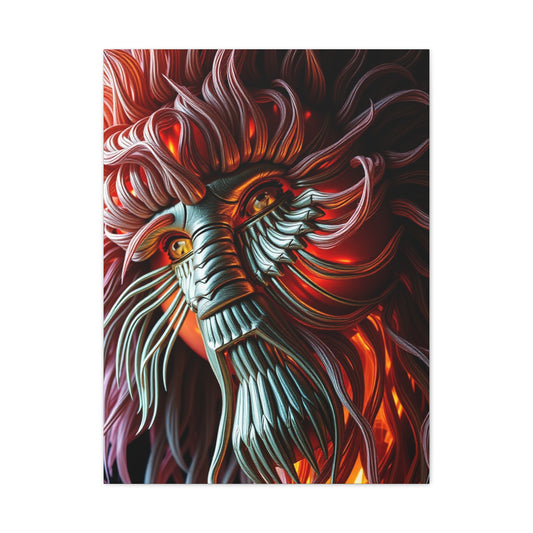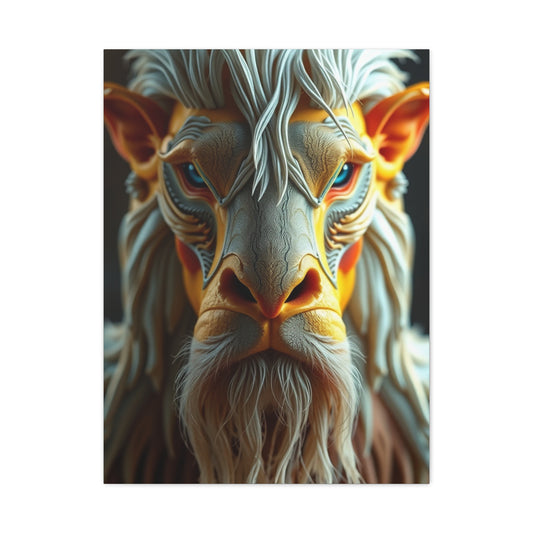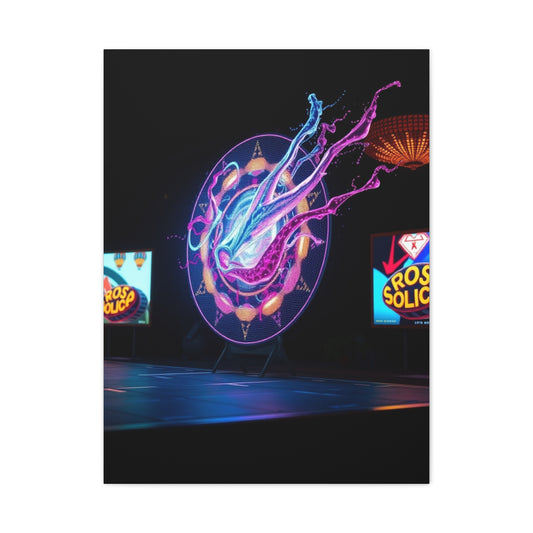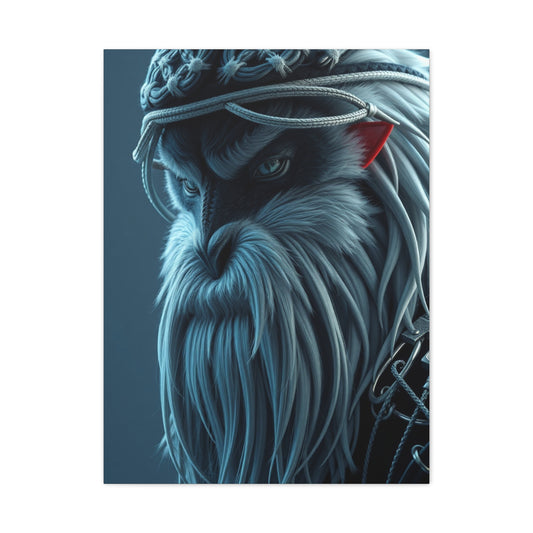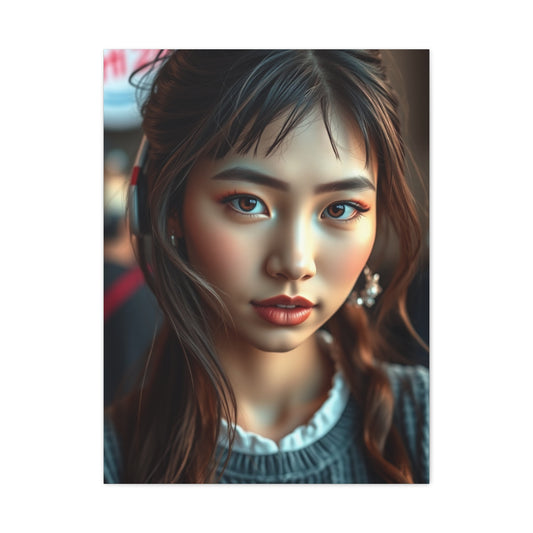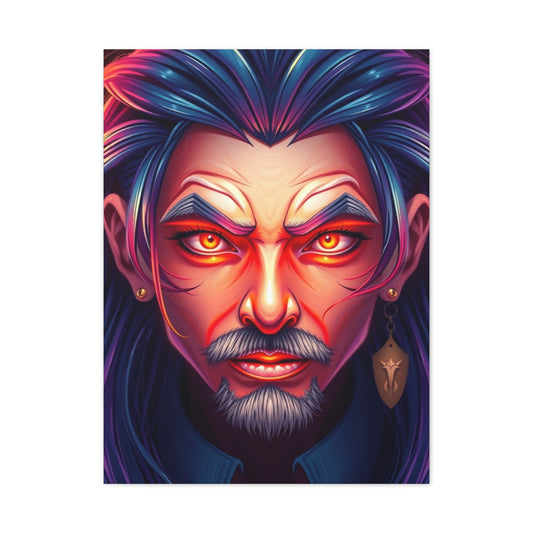Collection: Wegs Art Wall Art
The Revolutionary World of Cartoon Graffiti: Nathan Wegs Art Wall Art
Nathan Wegner's emergence in the contemporary art scene represents a fascinating convergence of traditional street art sensibilities with beloved animated characters that have shaped multiple generations. The Brandon, Florida-based artist has crafted a distinctive visual language that transforms recognizable cartoon figures into vibrant pop art masterpieces, creating an entirely new genre within the urban art movement.
The inception of cartoon graffiti as a legitimate art form traces back to the rebellious nature of street art itself, where artists sought to reclaim public spaces through unauthorized artistic expression. However, Wegner's approach transcends conventional graffiti boundaries by incorporating elements from mainstream animation, creating a bridge between underground culture and popular entertainment media. This unique synthesis has resulted in artwork that resonates with diverse audiences, from streetwear enthusiasts to animation collectors.
The artistic foundation of Wegner's work stems from his deep appreciation for animation aesthetics combined with traditional graffiti techniques. His signature beanie has become as iconic as his artwork, symbolizing the casual yet dedicated approach he brings to his craft. The juxtaposition of childhood nostalgia embedded within sophisticated artistic execution creates a compelling narrative that speaks to viewers on multiple levels.
Characters from shows like Rick and Morty, Adventure Time, and SpongeBob SquarePants undergo dramatic transformation under Wegner's creative vision. These familiar figures are reimagined through vibrant color palettes and dynamic compositions that maintain their original essence while introducing entirely new artistic dimensions. The process involves careful consideration of each character's personality traits and visual characteristics, ensuring that the final artwork honors the source material while establishing Wegner's unique artistic signature.
Cartoon Street Expression
The cultural impact of cartoon graffiti extends beyond mere artistic expression, serving as a commentary on contemporary society's relationship with childhood memories and adult responsibilities. Wegner's work captures the eternal struggle between maintaining innocence and navigating complex adult realities, using beloved animated characters as vehicles for deeper philosophical exploration.
The technical aspects of creating cartoon graffiti require mastery of multiple artistic disciplines, from traditional drawing and painting techniques to modern digital art tools. Wegner's versatility across various mediums demonstrates his commitment to pushing creative boundaries while maintaining consistent quality throughout his diverse portfolio. His ability to seamlessly transition between marker-based illustrations and large-scale wall murals showcases the adaptability necessary for success in contemporary art markets.
Social media platforms have played a crucial role in amplifying Wegner's artistic reach, allowing him to connect with thousands of followers who appreciate his unique aesthetic approach. The viral nature of his content creation process, particularly videos showcasing his artistic techniques, has transformed traditional art consumption patterns by making the creative process as engaging as the finished products themselves.
Character Transformation Mastery and Artistic Vision
The metamorphosis of established cartoon characters into Wegner's distinctive artistic style represents one of the most challenging aspects of his creative process. Each character requires careful analysis to identify core visual elements that define their personality and appeal, followed by strategic modification that maintains recognizability while introducing fresh creative perspectives.
Rick Sanchez, the brilliant yet morally ambiguous scientist from Rick and Morty, undergoes particularly striking transformation in Wegner's interpretations. The character's distinctive wild hair, lab coat, and perpetually disheveled appearance provide excellent foundations for artistic experimentation. Wegner enhances these characteristics through bold color choices and dynamic positioning that emphasize Rick's chaotic genius while adding layers of visual complexity not present in the original animation.
Morty Smith's anxious and uncertain personality translates beautifully into Wegner's artistic vocabulary, with the character's wide-eyed expressions and nervous postures providing rich material for creative exploration. The artist's ability to capture Morty's vulnerability while simultaneously empowering the character through vibrant colors and confident linework demonstrates sophisticated understanding of character psychology and visual storytelling principles.
Adventure Time's Jake the Dog presents unique challenges due to his shape-shifting abilities and fluid form. Wegner's interpretations of Jake often explore the character's magical properties through surreal color transitions and impossible geometric configurations that push the boundaries of traditional character representation. These artistic choices reflect deeper themes about identity, transformation, and the limitless possibilities inherent in creative expression.
The iconic shark from Jaws represents a departure from Wegner's typical cartoon sources, demonstrating his versatility in adapting diverse cultural references into his signature style. The menacing predator becomes a vibrant pop culture icon through strategic color application and stylistic modifications that transform fear into fascination, showcasing Wegner's ability to subvert traditional emotional responses through artistic manipulation.
SpongeBob SquarePants characters offer rich opportunities for geometric experimentation due to their simple yet distinctive shapes. Wegner's treatments of SpongeBob, Patrick, and other Bikini Bottom residents often emphasize the mathematical precision underlying their designs while introducing organic elements that create visual tension and narrative complexity.
The artistic process of character transformation involves multiple stages of conceptual development, from initial sketches exploring different interpretative approaches to final compositions that balance familiarity with innovation. Wegner's commitment to maintaining character integrity while pushing creative boundaries requires deep understanding of both source material and contemporary artistic trends.
Color psychology plays a fundamental role in character transformation success, with strategic palette choices capable of completely altering viewer perceptions of familiar figures. Wegner's mastery of color relationships enables him to evoke specific emotional responses while maintaining visual harmony throughout complex compositions featuring multiple characters and environmental elements.
Origins of Contemporary Cartoon Street Expression
Nathan Wegner's emergence in the contemporary art scene represents a fascinating convergence of traditional street art sensibilities with beloved animated characters that have shaped multiple generations. The Brandon, Florida-based artist has crafted a distinctive visual language that transforms recognizable cartoon figures into vibrant pop art masterpieces, creating an entirely new genre within the urban art movement.
The inception of cartoon graffiti as a legitimate art form traces back to the rebellious nature of street art itself, where artists sought to reclaim public spaces through unauthorized artistic expression. However, Wegner's approach transcends conventional graffiti boundaries by incorporating elements from mainstream animation, creating a bridge between underground culture and popular entertainment media. This unique synthesis has resulted in artwork that resonates with diverse audiences, from streetwear enthusiasts to animation collectors.
The artistic foundation of Wegner's work stems from his deep appreciation for animation aesthetics combined with traditional graffiti techniques. His signature beanie has become as iconic as his artwork, symbolizing the casual yet dedicated approach he brings to his craft. The juxtaposition of childhood nostalgia embedded within sophisticated artistic execution creates a compelling narrative that speaks to viewers on multiple levels.
Characters from shows like Rick and Morty, Adventure Time, and SpongeBob SquarePants undergo dramatic transformation under Wegner's creative vision. These familiar figures are reimagined through vibrant color palettes and dynamic compositions that maintain their original essence while introducing entirely new artistic dimensions. The process involves careful consideration of each character's personality traits and visual characteristics, ensuring that the final artwork honors the source material while establishing Wegner's unique artistic signature.
The cultural impact of cartoon graffiti extends beyond mere artistic expression, serving as a commentary on contemporary society's relationship with childhood memories and adult responsibilities. Wegner's work captures the eternal struggle between maintaining innocence and navigating complex adult realities, using beloved animated characters as vehicles for deeper philosophical exploration.
The technical aspects of creating cartoon graffiti require mastery of multiple artistic disciplines, from traditional drawing and painting techniques to modern digital art tools. Wegner's versatility across various mediums demonstrates his commitment to pushing creative boundaries while maintaining consistent quality throughout his diverse portfolio. His ability to seamlessly transition between marker-based illustrations and large-scale wall murals showcases the adaptability necessary for success in contemporary art markets.
Social media platforms have played a crucial role in amplifying Wegner's artistic reach, allowing him to connect with thousands of followers who appreciate his unique aesthetic approach. The viral nature of his content creation process, particularly videos showcasing his artistic techniques, has transformed traditional art consumption patterns by making the creative process as engaging as the finished products themselves.
Mastery and Artistic Vision
The metamorphosis of established cartoon characters into Wegner's distinctive artistic style represents one of the most challenging aspects of his creative process. Each character requires careful analysis to identify core visual elements that define their personality and appeal, followed by strategic modification that maintains recognizability while introducing fresh creative perspectives.
Rick Sanchez, the brilliant yet morally ambiguous scientist from Rick and Morty, undergoes particularly striking transformation in Wegner's interpretations. The character's distinctive wild hair, lab coat, and perpetually disheveled appearance provide excellent foundations for artistic experimentation. Wegner enhances these characteristics through bold color choices and dynamic positioning that emphasize Rick's chaotic genius while adding layers of visual complexity not present in the original animation.
Morty Smith's anxious and uncertain personality translates beautifully into Wegner's artistic vocabulary, with the character's wide-eyed expressions and nervous postures providing rich material for creative exploration. The artist's ability to capture Morty's vulnerability while simultaneously empowering the character through vibrant colors and confident linework demonstrates sophisticated understanding of character psychology and visual storytelling principles.
Adventure Time's Jake the Dog presents unique challenges due to his shape-shifting abilities and fluid form. Wegner's interpretations of Jake often explore the character's magical properties through surreal color transitions and impossible geometric configurations that push the boundaries of traditional character representation. These artistic choices reflect deeper themes about identity, transformation, and the limitless possibilities inherent in creative expression.
The iconic shark from Jaws represents a departure from Wegner's typical cartoon sources, demonstrating his versatility in adapting diverse cultural references into his signature style. The menacing predator becomes a vibrant pop culture icon through strategic color application and stylistic modifications that transform fear into fascination, showcasing Wegner's ability to subvert traditional emotional responses through artistic manipulation.
SpongeBob SquarePants characters offer rich opportunities for geometric experimentation due to their simple yet distinctive shapes. Wegner's treatments of SpongeBob, Patrick, and other Bikini Bottom residents often emphasize the mathematical precision underlying their designs while introducing organic elements that create visual tension and narrative complexity.
The artistic process of character transformation involves multiple stages of conceptual development, from initial sketches exploring different interpretative approaches to final compositions that balance familiarity with innovation. Wegner's commitment to maintaining character integrity while pushing creative boundaries requires deep understanding of both source material and contemporary artistic trends.
Color psychology plays a fundamental role in character transformation success, with strategic palette choices capable of completely altering viewer perceptions of familiar figures. Wegner's mastery of color relationships enables him to evoke specific emotional responses while maintaining visual harmony throughout complex compositions featuring multiple characters and environmental elements.
Creative Process Behind Wall Art Spectacles
The creation of large-scale wall art represents the pinnacle of Wegner's artistic expression, requiring careful planning, precise execution, and unwavering commitment to quality throughout extended creation periods. These monumental works transform ordinary walls into portals to animated worlds, creating immersive experiences that engage viewers on both intellectual and emotional levels.
The initial planning phase involves detailed site analysis to understand architectural constraints, lighting conditions, and viewer traffic patterns that will influence the final composition. Wegner's approach emphasizes harmony between artwork and environment, ensuring that his creations enhance rather than compete with existing spatial dynamics. This thoughtful integration reflects sophisticated understanding of public art principles and community engagement strategies.
Material selection for wall art projects requires balancing artistic vision with practical considerations including weather resistance, color fastness, and long-term durability. Wegner's experience with various paint types, primers, and protective coatings enables him to create artworks capable of withstanding environmental challenges while maintaining their visual impact over extended periods.
The scaling process from small sketches to wall-sized compositions presents unique technical challenges that demand precise mathematical calculations and spatial reasoning skills. Wegner's ability to maintain proportional accuracy while adapting compositions for different scales demonstrates mastery of fundamental artistic principles and commitment to professional execution standards.
Time management becomes critical during wall art creation, as external factors including weather conditions, site accessibility, and community schedules can significantly impact project timelines. Wegner's systematic approach to project planning includes contingency strategies for common challenges, ensuring consistent progress regardless of unexpected obstacles.
Collaborative aspects of large-scale projects often require coordination with property owners, local authorities, and community members who may have varying perspectives on artistic expression. Wegner's diplomatic approach to stakeholder management reflects understanding that successful public art requires community buy-in and ongoing support for long-term preservation.
Documentation of the creative process through photography and video serves multiple purposes, from providing portfolio material to creating engaging content for social media audiences. Wegner's commitment to sharing his artistic journey helps demystify the creation process while inspiring other artists to pursue their own creative ambitions.
The physical demands of wall art creation require sustained energy and focus over extended periods, often in challenging environmental conditions. Wegner's dedication to maintaining consistent quality throughout lengthy projects demonstrates professional discipline and commitment to artistic excellence that sets his work apart from casual street art practitioners.
Color Theory and Palette Selection Strategies
Wegner's sophisticated understanding of color theory forms the foundation of his artistic success, enabling him to create visually striking compositions that maintain harmony while exploring bold creative territories. His strategic palette selections transform familiar cartoon characters into fresh artistic statements that captivate audiences through careful manipulation of visual perception principles.
Primary color relationships within Wegner's work demonstrate masterful understanding of complementary and analogous color schemes that create visual excitement without overwhelming viewer attention. His ability to balance high-contrast elements with subtle transitional tones creates dynamic compositions that reward both casual viewing and detailed examination.
The psychological impact of color choices extends beyond mere aesthetic considerations, influencing emotional responses and narrative interpretations that viewers bring to his artwork. Wegner's intuitive grasp of color psychology enables him to guide audience reactions while maintaining artistic integrity and personal creative vision throughout diverse project types.
Secondary and tertiary color applications within complex compositions require sophisticated planning to avoid visual chaos while maintaining individual character distinctiveness. Wegner's systematic approach to color hierarchy ensures that primary subjects maintain visual prominence while supporting elements contribute to overall compositional success without competing for attention.
Color temperature manipulation serves as a powerful tool for creating depth and atmosphere within flat wall surfaces, transforming two-dimensional spaces into immersive environments that suggest three-dimensional reality. Wegner's mastery of warm and cool color relationships enables him to create convincing spatial illusions that enhance viewer engagement and artistic impact.
Saturation control represents another crucial aspect of Wegner's color strategy, with carefully calibrated intensity levels creating visual rhythm and preventing color fatigue during extended viewing periods. His ability to balance vibrant accent colors with more subdued supporting tones demonstrates sophisticated understanding of visual perception principles and audience psychology.
The interaction between artificial and natural lighting conditions requires careful consideration during color selection processes, as different illumination sources can dramatically alter perceived color relationships and overall artistic impact. Wegner's experience with various lighting scenarios enables him to create artworks that maintain their visual effectiveness across diverse viewing conditions.
Cultural associations with specific colors influence audience interpretations of character personalities and narrative themes embedded within artistic compositions. Wegner's awareness of these cultural factors enables him to leverage symbolic color meanings while avoiding unintended negative associations that could detract from his positive artistic messages.
Street Art Culture and Community Impact
The integration of cartoon graffiti into existing street art communities represents a significant cultural shift that has expanded traditional definitions of legitimate artistic expression while creating new opportunities for cross-generational dialogue and understanding. Wegner's contributions to this evolution demonstrate the potential for innovative approaches to transform established cultural practices.
Historical street art movements emphasized political resistance and social commentary through bold visual statements that challenged authority and questioned established power structures. Wegner's cartoon-focused approach maintains the rebellious spirit of traditional graffiti while introducing accessible imagery that appeals to broader audiences without sacrificing artistic integrity or cultural relevance.
Community responses to cartoon graffiti installations often differ significantly from reactions to traditional street art, with familiar characters serving as cultural bridges that facilitate positive interactions between artists and local residents. Wegner's work demonstrates how strategic subject matter selection can transform potential conflicts into opportunities for community building and artistic appreciation.
The mentorship aspects of street art culture benefit significantly from cartoon graffiti's accessibility, as younger artists find inspiration in familiar characters while learning fundamental artistic techniques through observation and practice. Wegner's willingness to share his creative process contributes to knowledge transfer that strengthens entire artistic communities.
Economic impacts of quality street art installations include increased foot traffic, enhanced property values, and attraction of creative industries to previously overlooked neighborhoods. Wegner's professional approach to public art creation demonstrates how individual artistic excellence can generate positive community benefits that extend far beyond immediate aesthetic improvements.
Legal considerations surrounding street art creation require careful navigation of property rights, permit requirements, and community standards that vary significantly across different jurisdictions. Wegner's experience with authorized installations provides valuable insights for other artists seeking to create impactful public art while maintaining legal compliance.
The documentation and preservation of street art faces unique challenges due to environmental exposure and potential property modifications that may affect or eliminate existing artworks. Wegner's comprehensive documentation practices ensure that his creative contributions remain accessible even when physical artworks face uncertainty.
Cross-cultural communication through visual art transcends language barriers and cultural differences, creating shared experiences that unite diverse community members around common artistic appreciation. Wegner's work demonstrates how carefully crafted visual narratives can facilitate understanding and connection across traditional social boundaries.
Digital Presence and Social Media Influence
The transformation of artistic practice through digital platforms has fundamentally altered how artists connect with audiences, monetize their work, and build sustainable creative careers. Wegner's strategic approach to social media utilization demonstrates how traditional artistic skills can be amplified through contemporary communication channels to reach global audiences.
Content creation strategies that combine finished artwork presentation with behind-the-scenes creative process documentation provide multifaceted value propositions that engage different audience segments while maintaining consistent brand identity. Wegner's video content showcasing his marker techniques and customization processes creates educational value that complements his primary artistic offerings.
Audience engagement through interactive content and responsive communication builds loyal followings that translate into sustainable support for ongoing creative projects. Wegner's authentic personality and willingness to share both successes and challenges creates genuine connections that extend beyond typical artist-audience relationships.
Platform-specific content optimization requires understanding different audience preferences and technical requirements across various social media channels, from visual-focused networks to video-centric platforms. Wegner's ability to adapt his content presentation while maintaining consistent artistic identity demonstrates sophisticated understanding of digital marketing principles.
Viral content creation involves identifying elements that encourage sharing and discussion while maintaining artistic integrity and personal brand consistency. Wegner's success in creating shareable content stems from his ability to balance entertainment value with genuine artistic merit, creating content that appeals to diverse audience motivations.
Monetization strategies through digital platforms include direct sales, commissioned work, merchandise development, and sponsored content opportunities that require careful balance to maintain audience trust and artistic credibility. Wegner's approach to commercial opportunities demonstrates how artists can generate sustainable income while preserving creative freedom and authentic expression.
Cross-platform promotion and content repurposing maximize the impact of individual creative efforts while maintaining fresh content streams that keep audiences engaged across multiple touchpoints. Wegner's systematic approach to content distribution ensures consistent visibility while minimizing redundant effort and resource allocation.
Analytics and performance tracking provide valuable insights into audience preferences and content effectiveness that inform future creative decisions and strategic planning. Wegner's data-driven approach to content creation enables continuous improvement while maintaining authentic artistic expression that resonates with target audiences.
Future Directions and Artistic Evolution
The continuous evolution of artistic practice requires ongoing experimentation with new techniques, materials, and subject matter that push creative boundaries while maintaining core artistic identity and vision. Wegner's commitment to growth and innovation positions him at the forefront of contemporary cartoon graffiti development.
Emerging technologies including augmented reality and interactive digital art platforms offer exciting opportunities for expanding traditional street art into new dimensional experiences that engage audiences through multiple sensory channels. Wegner's openness to technological integration demonstrates forward-thinking approaches that could revolutionize public art consumption and appreciation.
Collaborative projects with other artists, brands, and cultural institutions provide opportunities for creative cross-pollination and audience expansion while maintaining individual artistic integrity and vision. Wegner's successful partnerships demonstrate how strategic collaboration can amplify individual artistic impact without compromising personal creative identity.
Scale expansion from individual artworks to comprehensive environmental installations requires sophisticated project management skills and resources that enable transformation of entire spaces into immersive artistic experiences. Wegner's growing expertise in large-scale project execution positions him for increasingly ambitious creative undertakings.
Educational initiatives including workshops, tutorials, and mentorship programs provide opportunities to share knowledge while contributing to broader artistic community development and sustainability. Wegner's commitment to knowledge sharing reflects understanding that individual artistic success benefits from healthy creative ecosystems that support emerging talent.
International market expansion requires understanding diverse cultural contexts and artistic preferences while maintaining core creative identity and quality standards. Wegner's potential for global reach depends on strategic market analysis and cultural sensitivity that honors local traditions while introducing innovative artistic approaches.
Sustainability considerations including environmental impact of materials and creation processes are becoming increasingly important factors in artistic practice and audience evaluation. Wegner's attention to sustainable practices demonstrates responsible artistic leadership that acknowledges broader social and environmental responsibilities.
Legacy planning and artistic preservation ensure that creative contributions remain accessible to future generations while continuing to inspire new artistic developments and innovations. Wegner's documentation practices and commitment to quality create lasting artistic contributions that will influence future cartoon graffiti practitioners and enthusiasts.
Material Science and Artistic Tool Mastery
The sophisticated understanding of artistic materials represents a cornerstone of professional creative practice that distinguishes exceptional artists from casual practitioners. Nathan Wegner's expertise in material selection and application techniques enables him to achieve consistent results across diverse project types while maintaining the highest quality standards throughout his extensive portfolio.
Marker technology has evolved significantly beyond traditional felt-tip instruments, with contemporary options offering unprecedented color saturation, blending capabilities, and longevity that transform artistic possibilities. Wegner's mastery of various marker types, from alcohol-based systems to water-soluble alternatives, demonstrates comprehensive understanding of chemical interactions and surface compatibility factors that influence final artwork appearance.
Paper selection for marker-based illustrations requires careful consideration of absorbency rates, bleeding characteristics, and color reproduction qualities that vary dramatically between different substrate options. Wegner's experience with specialized papers designed for marker applications ensures optimal color vibrancy while preventing unwanted bleeding or feathering that could compromise artistic precision.
Surface preparation techniques for wall art projects involve multiple stages of cleaning, priming, and conditioning that create optimal conditions for paint adhesion and color development. Wegner's systematic approach to surface preparation reflects professional standards that ensure artwork longevity while preventing common problems including paint failure and color distortion.
Paint chemistry understanding enables strategic selection of compatible materials that work synergistically to create desired visual effects while maintaining structural integrity over time. Wegner's knowledge of acrylic formulations, pigment stability, and binding agent properties informs his material choices and application techniques throughout complex projects.
Environmental factors including humidity, temperature, and air quality significantly impact material performance and artistic outcomes, requiring adaptive strategies that account for changing conditions throughout project timelines. Wegner's experience with various environmental challenges enables him to maintain consistent quality regardless of working conditions.
Tool maintenance and care practices extend the functional lifespan of artistic instruments while ensuring consistent performance throughout extended creative sessions. Wegner's attention to tool maintenance reflects professional discipline that translates into reliable artistic results and cost-effective resource management.
Quality control measures throughout the creative process include regular assessment of material performance, color accuracy, and structural integrity that prevent problems before they compromise artistic outcomes. Wegner's systematic approach to quality assurance demonstrates commitment to excellence that distinguishes professional practice from casual artistic endeavors.
Surface Analysis and Substrate Preparation
The foundation of successful artwork lies in comprehensive understanding of substrate characteristics and preparation techniques that create optimal conditions for artistic expression. Wegner's expertise in surface analysis enables him to adapt his artistic approach to diverse materials while maintaining consistent quality and visual impact across all project types.
Concrete wall surfaces present unique challenges including varying porosity, chemical composition, and structural irregularities that require specialized preparation techniques. Wegner's approach to concrete preparation involves thorough cleaning, crack repair, and primer application that creates uniform surfaces capable of supporting detailed artistic work without compromising long-term stability.
Metal substrates including steel and aluminum surfaces require different preparation approaches due to oxidation concerns, thermal expansion properties, and paint adhesion characteristics that differ significantly from traditional wall materials. Wegner's experience with metal surface preparation ensures proper adhesion while preventing common problems including rust development and paint failure.
Wood surfaces offer unique opportunities for artistic expression but require careful moisture management and grain consideration that influence paint absorption and final appearance. Wegner's understanding of wood characteristics enables him to leverage natural grain patterns while preventing moisture-related problems that could damage artwork integrity.
Textile customization projects demand specialized techniques that account for fabric flexibility, dye compatibility, and washing durability requirements that differ from traditional artistic applications. Wegner's success with clothing and accessory customization demonstrates mastery of flexible substrate preparation and material selection strategies.
Glass and ceramic surfaces present smooth, non-porous substrates that require specialized primers and paint formulations designed for optimal adhesion and durability. Wegner's experience with various smooth substrates enables him to create lasting artwork on challenging surfaces that might defeat less experienced practitioners.
Plastic and polymer surfaces require understanding of chemical compatibility between paint systems and substrate materials to prevent adhesion failure and chemical damage. Wegner's knowledge of polymer chemistry informs his material selection and surface preparation approaches for synthetic substrates.
Surface texture modification techniques including sanding, etching, and mechanical abrasion create improved adhesion characteristics while enabling artistic texture effects that enhance visual interest. Wegner's strategic use of texture modification demonstrates sophisticated understanding of surface science principles and their artistic applications.
Compositional Theory and Visual Balance
The arrangement of visual elements within artistic compositions requires sophisticated understanding of design principles that guide viewer attention while creating harmonious and engaging aesthetic experiences. Wegner's mastery of compositional theory enables him to create dynamic artworks that maintain visual balance while exploring bold creative territories.
Rule of thirds application provides structural framework for element placement that creates natural visual flow and prevents static compositions that fail to engage viewer attention effectively. Wegner's intuitive application of mathematical proportions creates compositions that feel balanced and dynamic without appearing calculated or artificial.
Focal point establishment through strategic element placement and visual emphasis ensures that viewers understand intended narrative hierarchy while appreciating supporting details that enrich overall artistic experience. Wegner's ability to guide viewer attention through compositional structure demonstrates sophisticated understanding of visual communication principles.
Negative space utilization creates breathing room within complex compositions while providing contrast areas that enhance positive element impact and readability. Wegner's strategic use of empty areas prevents visual overcrowding while maintaining dynamic energy throughout his artistic creations.
Scale relationships between different compositional elements influence narrative importance and visual hierarchy, with size variations creating depth illusions and emotional emphasis that support intended artistic messages. Wegner's mastery of scale manipulation enables him to create compelling visual stories through strategic size relationships.
Movement and rhythm creation through repetitive elements and directional lines guide viewer attention through compositional sequences while creating visual energy that maintains engagement throughout extended viewing periods. Wegner's understanding of visual rhythm enables him to create dynamic compositions that reward detailed examination.
Color balance throughout complex compositions requires careful distribution of visual weight that prevents dominant areas from overwhelming supporting elements while maintaining overall harmonic unity. Wegner's sophisticated color distribution strategies create compositions that feel complete and balanced regardless of individual element complexity.
Contrast management through strategic value, color, and texture variations creates visual interest while maintaining readability and compositional coherence. Wegner's ability to balance high-contrast elements with subtle transitions demonstrates mastery of visual dynamics that distinguish professional artwork from amateur attempts.
Character Psychology and Emotional Expression
The successful interpretation of cartoon characters requires deep understanding of personality traits, emotional ranges, and behavioral characteristics that define their appeal and cultural significance. Wegner's psychological insight into character essence enables him to create interpretations that honor source material while introducing fresh perspectives and artistic innovation.
Facial expression analysis reveals subtle emotional indicators including eye position, mouth curvature, and eyebrow angle that communicate complex psychological states through minimal visual cues. Wegner's attention to expression details enables him to capture character personalities while exploring emotional depths not always apparent in original animated presentations.
Body language interpretation involves understanding how posture, gesture, and positioning communicate character attitudes, relationships, and emotional states that complement facial expressions in creating complete psychological portraits. Wegner's mastery of body language translation enables him to create dynamic character presentations that communicate rich emotional narratives.
Color psychology application in character interpretation involves strategic palette selection that reinforces personality traits while exploring alternative emotional associations that expand character depth and viewer understanding. Wegner's sophisticated color psychology understanding enables him to enhance character appeal while maintaining authentic personality representation.
Personality trait amplification through artistic interpretation involves identifying core character characteristics and strategically emphasizing these elements through visual design choices that make personalities more apparent and engaging. Wegner's ability to distill character essence into visual elements creates immediately recognizable yet artistically innovative character presentations.
Emotional range exploration involves investigating characters beyond their typical animated presentations to discover hidden depths and alternative personality aspects that enrich artistic interpretation possibilities. Wegner's psychological curiosity enables him to create character presentations that reveal new dimensions while maintaining familiar appeal.
Relationship dynamics between multiple characters within single compositions require understanding of social hierarchies, emotional connections, and narrative tensions that influence positioning, sizing, and color relationships throughout complex artworks. Wegner's grasp of character relationships enables him to create group compositions that tell compelling visual stories.
Viewer empathy creation through character presentation involves strategic artistic choices that encourage emotional connection and identification with portrayed characters, transforming casual viewers into invested participants in artistic narratives. Wegner's empathetic approach to character interpretation creates artwork that resonates emotionally with diverse audiences.
Brand Identity and Artistic Signature Development
The establishment of recognizable artistic identity requires consistent visual elements and creative approaches that distinguish individual work within competitive artistic markets while maintaining flexibility for continued growth and evolution. Wegner's brand development demonstrates strategic thinking that balances consistency with innovation throughout his expanding portfolio.
Visual signature elements including specific color preferences, compositional approaches, and stylistic techniques create immediately recognizable artistic fingerprints that establish brand identity across diverse project types. Wegner's consistent visual vocabulary enables audiences to identify his work regardless of subject matter or scale variations.
Style evolution management involves gradually introducing new techniques and approaches while maintaining core identity elements that prevent confusion or brand dilution among established audiences. Wegner's controlled artistic growth demonstrates strategic brand management that expands creative possibilities without sacrificing recognition value.
Market positioning strategies involve identifying unique artistic niches and competitive advantages that distinguish individual work from similar artists while appealing to specific audience segments. Wegner's cartoon graffiti specialization creates clear market differentiation that enables premium pricing and dedicated audience development.
Consistency maintenance across multiple platforms and project types requires systematic approaches to quality control and brand presentation that ensure uniform excellence regardless of format variations. Wegner's professional consistency demonstrates disciplined brand management that builds audience trust and expectation fulfillment.
Collaboration balance involves strategic partnerships and commissioned work that expand audience reach while maintaining brand integrity and creative control over artistic output. Wegner's selective collaboration approach demonstrates understanding of brand value protection while leveraging growth opportunities.
Intellectual property protection involves understanding copyright laws, trademark possibilities, and licensing opportunities that protect artistic investments while enabling strategic commercial exploitation. Wegner's attention to legal considerations demonstrates professional business understanding that supports sustainable creative careers.
Portfolio organization and presentation strategies involve curating artistic collections that demonstrate range while maintaining thematic coherence that supports brand identity and audience engagement. Wegner's sophisticated portfolio management creates compelling presentations that effectively communicate artistic value and professional competence.
Innovation in Cartoon Graffiti Techniques
The advancement of cartoon graffiti as a legitimate artistic medium requires continuous technical innovation and creative experimentation that pushes boundaries while maintaining cultural relevance and aesthetic appeal. Wegner's pioneering approaches to technique development contribute to genre evolution while establishing new standards for artistic excellence.
Layering strategies that combine traditional graffiti techniques with cartoon illustration methods create unique visual effects that distinguish cartoon graffiti from both parent artistic traditions. Wegner's innovative layering approaches demonstrate creative synthesis that generates entirely new aesthetic possibilities while honoring established artistic principles.
Mixed media integration involves combining markers, paints, digital elements, and unconventional materials in cohesive compositions that expand creative possibilities while maintaining visual harmony. Wegner's experimental material combinations demonstrate willingness to explore new territories while maintaining artistic quality and vision consistency.
Scale transition techniques enable successful adaptation of small-scale illustration methods to large-scale wall applications without losing detail quality or compositional integrity. Wegner's mastery of scale transitions demonstrates technical expertise that enables artistic vision realization regardless of size constraints.
Speed painting methods that maintain quality while reducing creation time enable artists to complete more projects while responding to market demands for rapid turnaround and competitive pricing. Wegner's efficient working methods demonstrate professional time management without compromising artistic standards.
Color blending innovations that create smooth transitions and unique effects distinguish advanced practitioners from basic artists while expanding creative possibilities and visual appeal. Wegner's color blending mastery enables him to achieve effects that enhance artistic impact while demonstrating technical sophistication.
Tool adaptation involves modifying standard artistic instruments or developing custom tools that enable unique effects and improved efficiency throughout complex projects. Wegner's creative tool usage demonstrates innovative problem-solving that contributes to technique advancement and artistic achievement.
Documentation and sharing of innovative techniques contribute to broader artistic community development while establishing thought leadership and professional recognition within specialized fields. Wegner's commitment to technique sharing demonstrates professional generosity that strengthens entire artistic communities while building personal reputation and influence.
Conclusion
The influence of innovative artistic movements extends far beyond individual creative achievements to encompass broader cultural shifts and generational changes in aesthetic appreciation and artistic consumption patterns. Wegner's contributions to cartoon graffiti development represent significant cultural impact that will influence future artistic directions and audience expectations.
Generational bridge building through cartoon character utilization creates cultural connections between different age groups that share appreciation for animated entertainment while bringing diverse perspectives to artistic interpretation. Wegner's cross-generational appeal demonstrates art's power to unite diverse communities around shared cultural touchstones.
Artistic legitimacy establishment for cartoon graffiti involves elevating street art applications through professional execution and sophisticated artistic vision that challenges traditional hierarchies between "high" and "low" art forms. Wegner's professional approach contributes to genre respectability and mainstream acceptance.
Cultural preservation aspects of cartoon character interpretation involve maintaining connection to shared cultural memories while adapting these references for contemporary audiences and artistic contexts. Wegner's respectful character treatment demonstrates understanding of cultural stewardship responsibilities alongside artistic innovation.
Influence on emerging artists through technique demonstration, mentorship activities, and inspirational example creates lasting impact that extends individual artistic achievement into broader community development and cultural enrichment. Wegner's visible success inspires other artists while contributing to artistic ecosystem health and growth.
Market development for cartoon graffiti creates new economic opportunities for artists while expanding audience appreciation for innovative artistic approaches that combine familiar elements in fresh presentations. Wegner's commercial success demonstrates market viability while encouraging other artists to pursue similar creative directions.
Documentation and archival importance ensures that innovative artistic approaches remain accessible to future researchers and practitioners who may build upon established foundations while developing new creative territories. Wegner's comprehensive documentation practices contribute to artistic history preservation and continuing influence.
Global reach potential through digital platforms and international interest in cartoon culture enables individual artistic innovations to influence worldwide artistic development and cultural exchange. Wegner's international audience demonstrates how local artistic innovation can achieve global significance through strategic presentation and quality execution.
